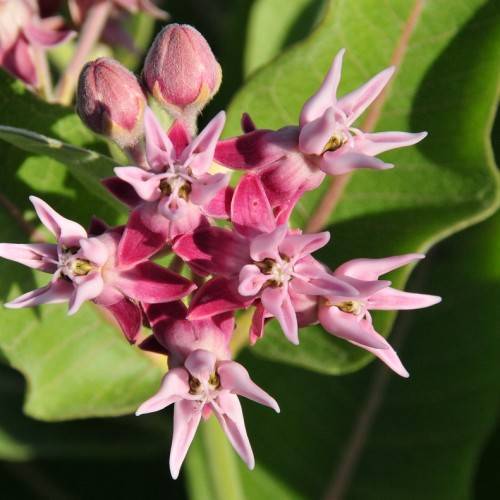
Hybrid Milkweed
Asclepias speciosa x
Watering:
Frequent
Hardiness Zone:
Flowers:
Flowers
Sun:
Sun
Soil:
Sand
Leaf:
Yes
Growth Rate:
Low
Drought Tolerant:
Yes
Care Level:
Medium
watering
Side Cluster Milkweed needs to be watered about once a week, but the quantity depends on both the size and age of the plant. For younger and smaller plants, water until the top few inches of soil is moist, but not too wet. For larger plants, pour approximately 1 gallon of water around the base of the plant. Water during the morning hours for best results. It is important to avoid overwatering the plant, so make sure to allow the soil to dry well between watering.
sunlight
Side Cluster Milkweed (Asclepias lanuginosa) prefers full sunlight for optimum growth. It should receive at least 6 hours of direct sunlight throughout the day. During summer months, the plant should get at least 8 hours of direct sunlight daily. Sunlight should be most intense between noon and 4:00 PM. It is important to note that this plant will benefit from some relief from the sun during the hottest part of the day.
pruning
Side Cluster Milkweed should be pruned in late Winter, typically in late February or early March when it is still dormant. The goal of pruning the plant is to promote an abundance of flowers and a dense overall shape. Pruning should focus on the ends of the plants stems and removing any dead flowers or seed pods. Removing the pods and stems near the ground helps to control the spread of the plant by keeping the seeds contained and preventing them from germinating. To keep the plant looking tidy, shear the tips of all the stems back approximately half their height. Be careful not to remove more than 1-third of the plant at any 1 time as this could cause unnecessary stress to the plant.
